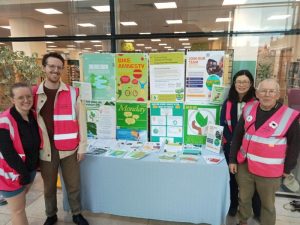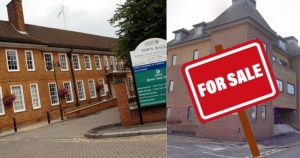Heathrow Airport’s plan for a third runway – requiring a major re-routing and tunnelling of the M25 – has received Government backing as the preferred option for expansion. A competing proposal for a smaller runway put forward by Arora has been rejected. Heathrow welcomed the decision to proceed with the 3,500m runway, arguing it would deliver economic gains and improved passenger experience. Critics have long criticised the plan, saying it undermines climate targets and that the motorway works risk repeating the chaos seen with the delayed A3/M25 junction upgrade, potentially bringing parts of Surrey to regular standstills. Heathrow insists the M25 realignment would be built on adjacent land, allowing the switch to the new carriageway to take place “in a series of carefully planned overnight operations”.
A Heathrow spokesperson said the expansion would mean “more connectivity, increased trade, improved passenger experience and a huge economic boost for the British businesses that will help design and build it”, but added that “further clarity” is required on regulation of the next phase. “We need definitive decisions from the CAA and Government by mid-December so that delay to the project can be avoided and we can get on with delivering this vital project for our customers and for the UK.” The £33 billion scheme is expected to be entirely privately funded. Around £21bn would cover the runway works, including £1.5bn for the M25 realignment, with £12bn for new terminal infrastructure. Heathrow says it will also invest £15bn to modernise existing facilities, including a new terminal “T5X”, an expanded Terminal 2 and three new satellite buildings.
In 2024 the airport handled 83.9 million passengers, operating at 99% of its annual flight cap of 480,000 flights. The expansion would lift these to 756,000 flights and around 150 million passengers. Heathrow’s plan will now inform the review of the Airports National Policy Statement (ANPS), the framework on which the eventual planning decision will be based. The Government said Heathrow’s proposal is the most deliverable and most likely of the options to be approved before the next general election. The Department for Transport stressed this is not a final decision; any changes to the ANPS will be subject to consultation and parliamentary scrutiny next year, with details such as runway length, layout and infrastructure impacts considered throughout the review.
Transport Secretary Heidi Alexander said Heathrow is the UK’s only hub airport, supporting “trade, tourism and hundreds of thousands of jobs”, adding that the announcement is “another important step to enable a third runway and build on these benefits”. She said the Government is acting “swiftly and decisively” to realise the project’s potential for passengers, businesses and the wider economy. Ministers also said the scheme must comply with legally binding climate obligations, while balancing economic growth, as well as air quality and noise requirements. The independent Climate Change Committee will be consulted to ensure compatibility with the UK’s net-zero framework. A planning application is expected after the ANPS review is complete.
In a promotional video, Heathrow sought to reassure the public about the M25 works: “We understand people may be concerned this could cause congestion or delays. Following previous consultation with National Highways we have developed a smarter solution. We build the future right next to the present. The vast majority of construction happens off-line. A new realigned section of the M25 is built on adjacent land while the current motorway operates as normal and the tunnels and bridges for a new runway are constructed while minimising impact on the airport or the existing motorway. Then in a series of carefully planned overnight operations, we make the switch. Traffic is transferred on to the new alignment with minimal disruption. Our approach also ensures local traffic and access for surrounding communities are kept moving with minimal disruption. This frees up the old route of the M25, creating a safe, traffic-free zone to build the final parts of the runway. The result is an upgraded and expanded M25, with new link roads separating M4 traffic from M25 mainline journeys, easing congestion and improving safety.”
Heathrow shown with a third runway over the M25 (image Heathrow)
Related reports:
Conditional nod to southern rail link to Heathrow













